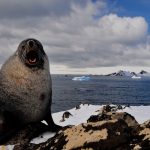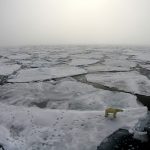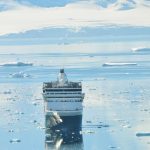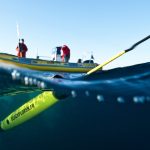 September 2, 2019 2:54 pm
Published by Climate Extremes
September 2, 2019 2:54 pm
Published by Climate Extremes
This paper reviews the societal and scientific motivations, current status, and future directions of IndOOS, while also discussing the need for enhanced observations in priority areas.
 August 28, 2019 11:55 am
Published by Climate Extremes
August 28, 2019 11:55 am
Published by Climate Extremes
Observations from Antarctic seals fitted with scientific instruments have revealed how eddy driven transport may be driving the melting of ice shelves, with consequent impacts on sea-level rise.
 August 15, 2019 11:14 am
Published by Climate Extremes
August 15, 2019 11:14 am
Published by Climate Extremes
CLEX researchers examined the behaviour of a passive tracer released near the seafloor in an idealised two-dimensional flow driven by bottom-enhanced turbulence.
 July 18, 2019 8:28 am
Published by Climate Extremes
July 18, 2019 8:28 am
Published by Climate Extremes
Gabriela Pilo and colleagues find that the Tasman Front is not so much a constant current, as is widely accepted, but switches between being an extension of the East Australian Current and an eddy field.
 July 9, 2019 1:00 am
Published by Climate Extremes
July 9, 2019 1:00 am
Published by Climate Extremes
Indian Ocean convection caused a powerful planetary wave that led to a drought in South America and a marine heatwave in the South Atlantic that lasted for months.
 July 3, 2019 1:17 pm
Published by Climate Extremes
July 3, 2019 1:17 pm
Published by Climate Extremes
Winter storms over the Arctic leave a legacy that breaks up the ice, melts it from beneath and has led to constant ongoing decline in old ice that far exceeds the period of the storm itself.
 June 27, 2019 11:17 am
Published by Climate Extremes
June 27, 2019 11:17 am
Published by Climate Extremes
Antarctic sea ice had been growing in area since 1979, despite the influence of global warming. Then unexpectedly in the austral spring of 2016, there was a rapid decline. CLEX researchers used multiple runs of a coupled ocean-atmosphere climate model to investigate whether these distant influences played a role and, if so, the level of the contribution to the sea-ice decline.
 June 9, 2019 2:49 pm
Published by Climate Extremes
June 9, 2019 2:49 pm
Published by Climate Extremes
This study introduces the Monash Simple Climate Model (MSCM) experiment database. The MSCM is based on a simple climate model and provides a wide range of model simulations to illustrate how the climate system works.
 May 29, 2019 2:18 pm
Published by Climate Extremes
May 29, 2019 2:18 pm
Published by Climate Extremes
Using novel ocean glider technology, a team of researchers from France, Norway, and Australia observed small eddy-like lenses of cold water in July 2017 along the western Svalbard shelf in the Arctic.
 May 23, 2019 12:47 pm
Published by Climate Extremes
May 23, 2019 12:47 pm
Published by Climate Extremes
CLEX researchers find strong correlation between ozone hole size and Australian summer temperatures. While there is no causal link between the two, the changes are driven by the same source - ocean temperatures.










